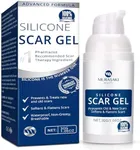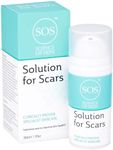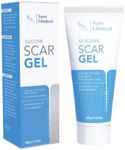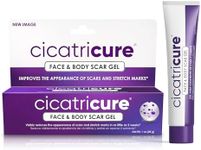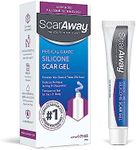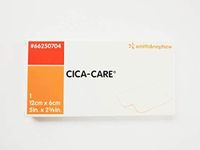Buying Guide for the Best Scar Creams
When choosing a scar cream, it's important to understand that different products are formulated to address various types of scars, such as those from surgery, acne, or injuries. The right scar cream for you will depend on the type of scar you have, your skin type, and any specific skin concerns you may have, such as sensitivity or allergies. It's also crucial to consider how often you're willing to apply the cream and how long you're prepared to wait to see results, as some products may take weeks or even months to show significant improvement. Always patch test a new product to ensure it doesn't irritate your skin.Active IngredientsActive ingredients in scar creams are the components that work to reduce the appearance of scars. Common active ingredients include silicone, which helps to hydrate and protect the scar area, and onion extract, which is believed to reduce inflammation and discoloration. When choosing a scar cream, consider what your skin responds well to. If you have sensitive skin, you might want to avoid products with strong active ingredients that could cause irritation. For those with older scars, ingredients like silicone might be more effective, while newer scars might benefit from ingredients that promote healing and reduce redness.
Formulation TypeScar creams come in various formulations, including gels, ointments, and creams. The formulation type can affect how the product feels on your skin and how well it absorbs. Gels are often lightweight and dry quickly, making them suitable for oily skin or for use during the day. Creams are typically more moisturizing and may be better for dry or sensitive skin. Ointments are thicker and may provide a protective barrier, which can be beneficial for scars that need extra protection. Choose a formulation that fits your skin type and lifestyle; for example, if you need something that won't interfere with makeup, a gel might be preferable.
Application FrequencyThe frequency with which you need to apply a scar cream can vary depending on the product and the severity of the scar. Some creams require application once or twice a day, while others might need more frequent use. Consistency is key in scar treatment, so choose a product with an application frequency that fits into your daily routine. If you're someone who might forget to apply a product multiple times a day, a once-daily application might be more suitable. Conversely, if you're committed to a more intensive treatment, a product requiring frequent application might yield faster results.
Duration of UseThe duration of use refers to how long you need to use the scar cream to see results. Some products may show improvement in a few weeks, while others might take several months. It's important to have realistic expectations and be patient, as scar healing is a gradual process. Consider how long you're willing to commit to using a product. If you're looking for quicker results, you might opt for a cream that promises visible changes in a shorter time frame. However, for long-term improvement, a product that requires extended use might be more effective.
Skin Type CompatibilityDifferent scar creams are formulated for different skin types, such as oily, dry, sensitive, or combination skin. It's important to choose a product that is compatible with your skin type to avoid irritation or adverse reactions. For example, if you have oily skin, you might prefer a non-comedogenic gel that won't clog pores. If you have dry skin, a moisturizing cream might be more beneficial. Understanding your skin type and any specific concerns, such as sensitivity or acne-prone skin, can help guide you to a product that will work best for you.



